NSFK Enlisted Ranks Knife by F. & A. Helbig
SKU: 54.GOR.04.001
Estimated market value:
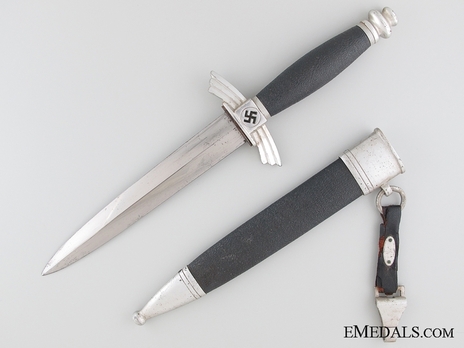
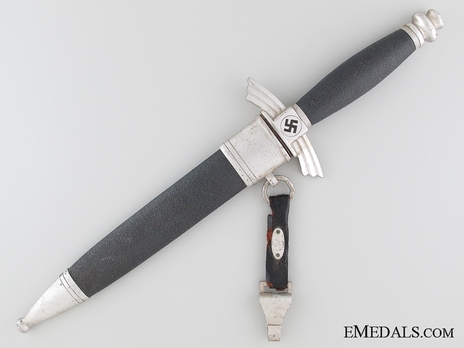
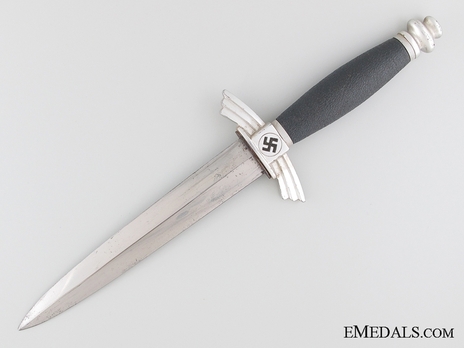
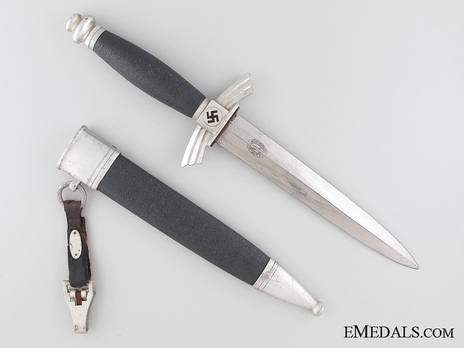
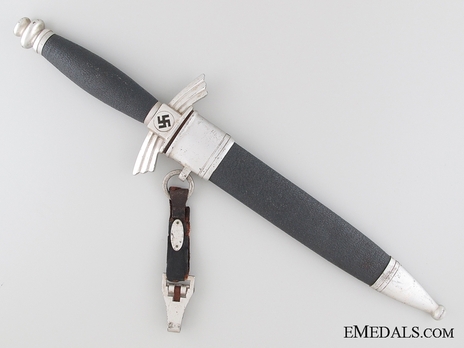
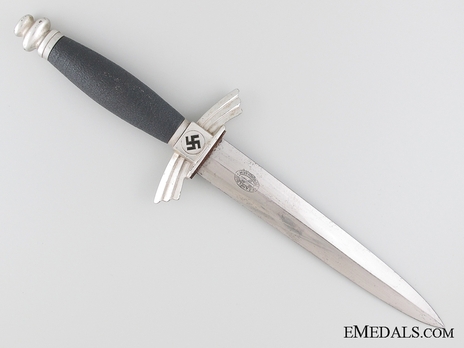
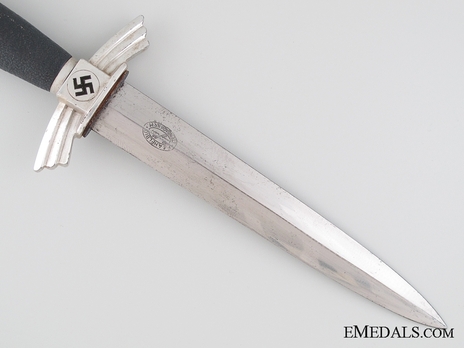
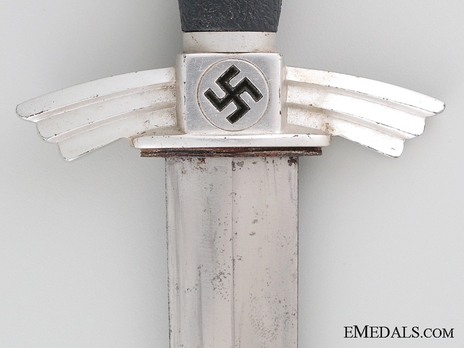
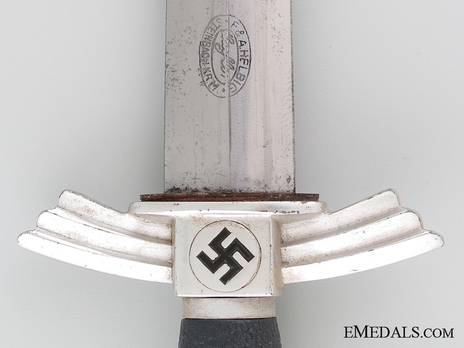
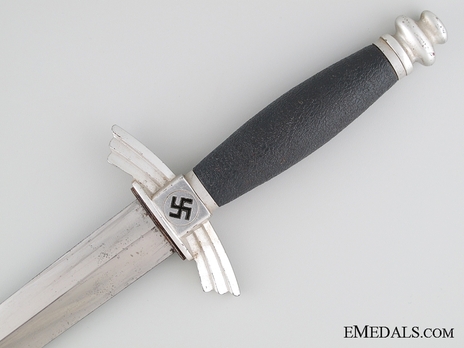
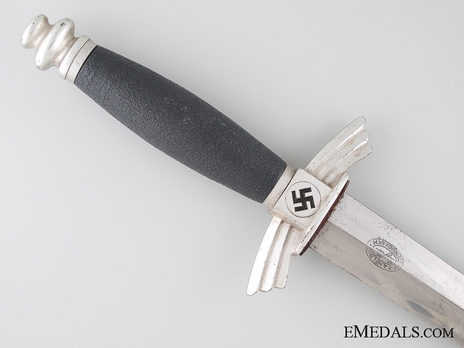
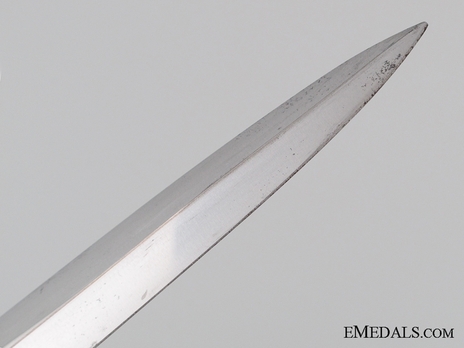
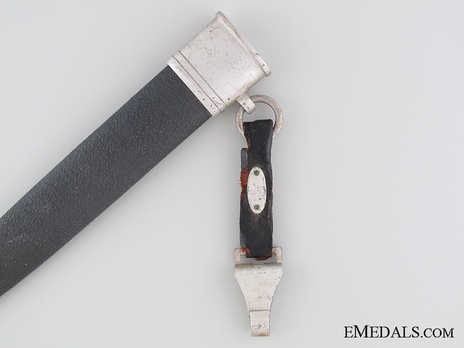
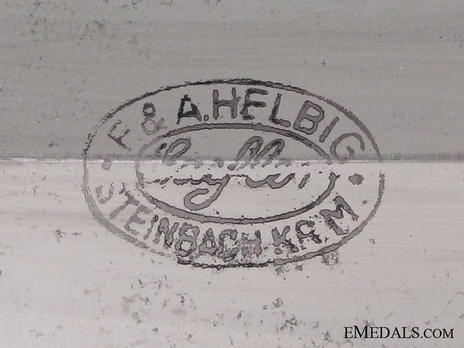
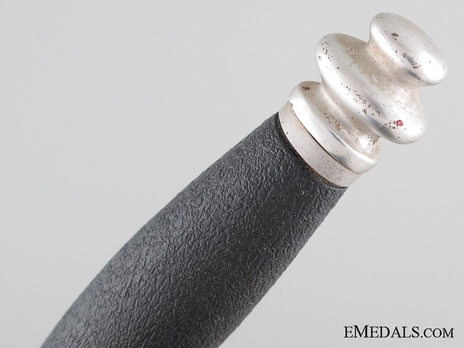
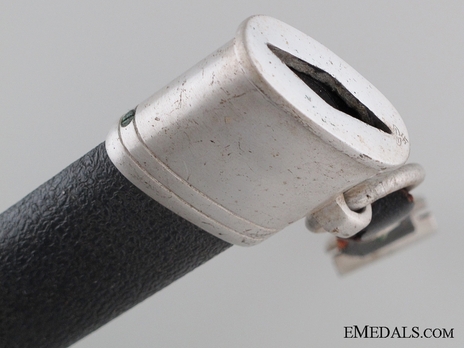
Estimated market value:
Attributes
History
The NSFK (Nationalsozialistisches Fliegerkorps = National Socialist Flyers Corps) was originally established in January of 1932. However, in March of 1933, the NSFK was, together with all other air sports organisations, absorbed into the newly founded DLV (Deutscher Luftsportverband = German Air Sports Association), an organisation that was used as a means to secretly rebuild the German air force under the guise of a civilian association. After the Luftwaffe was officially unveiled in 1935, the DLV was dissolved in 1937. On April 17, 1937, the NSFK was re-established as a civilian and paramilitary air sports organisation.
The NSFK’s mission was to provide the means for (young) Germans to pursue an interest in flying, and thus to secure new blood for the Luftwaffe. For this reason, the organisation worked closely with the aviation sub-section of the Hitler Youth.
Membership in the NSFK was on a voluntary basis. Members were forbidden from holding simultaneous SA, SS, or NSKK membership.
NSFK aviation training was no substitute for training in the Luftwaffe if a member decided to join the military. Since Luftwaffe planes were motorised without exception, the NSFK was the only organisation to teach its members how to fly gliders and hot air balloons.
The design of the DLV (Deutscher Luftsportverband = German Air Sports Association) Enlisted Ranks knife was co-opted for the NSFK Enlisted Ranks knife when the NSFK replaced the DLV in 1937; the NSFK knife was officially introduced in April 1937. The NSFK knives are identical to the DLV knives, except the knives of each organization are stamped with their specific organizational symbol on the scabbard throat. The symbol of the NSFK is a stylized Icarus figure with a swastika, while the symbol of the DLV is a winged propeller with a swastika.
The metal fittings on these knives, such as the pommel and the crossguard, are generally composed of silvered nickel with a protective layer of lacquer.
The pommel is composed of three tiered oblong sections, with the largest section in the middle.
The grip is composed of a wooden base covered in two pieces of fine quality, blue Moroccan leather. Each end of the grip features a ferrule.
The crossguard is composed of silvered nickel with a central rectangular area and two side wings. The central area features a rounded medallion that contains a black swastika. The swastika is made from inlaid enamel on early knives and paint on later knives. The wings are composed of three elongated and stacked rectangular sections on a downward curve.
The blade is composed of steel, and it features a polished, doubled edged surface with no ricasso.
The scabbard is composed of an internal steel shell that is covered in blue Moroccan leather, or leather coloured to match the leather on the grip. There are two metal fittings on the scabbard, one at the top (locket) and the other at the bottom (chape). The locket features a carrying ring, onto which a dagger hanger could be attached. All elements of the scabbard fittings are composed of nickel.
The dagger hanger features a brown leather hanger, a nickel snap clip, and nickel pendants on the leather hanger to hold it closed. The hanger was always attached to the scabbard’s top fitting.
The manufacturer marks are generally acid etched onto the reverse of the blade, below the crossguard.
The firm F. & A. Helbig was the principal manufacturer of a unique later version of the NSFK knife that has aluminum fittings, and the grip and scabbard are made from plastic. This grip and scabbard of this unique knife are painted in a crackle-finish design that imitates the appearance of leather. While the knife was primarily produced by F. & A. Helbig, there are rare examples of this version from other manufacturers.
There may be additional stamps on the scabbard throat. For example, early DLV knives may feature the Luftwaffe Waffen Ampt “LWaA,” acceptance marking from a factory inspector. This mark is made up of an abstracted line eagle with associated numbers and letters. This inspector mark should also be duplicated on the end of one of the crossguard wing-ends. Additional markings on the crossguard wing-ends or scabbard throat may be associated with the knife’s owner or other manufacturers. For example, one of the crossguard arm-ends will generally feature a stamped “K”. The “K” is the mark of the caster who made the knife fittings. While it is possible to find genuine DLV and NSFK knife without the “K” mark, they are quite rare.


Comments
Sign in to comment and reply.


Scroll Top